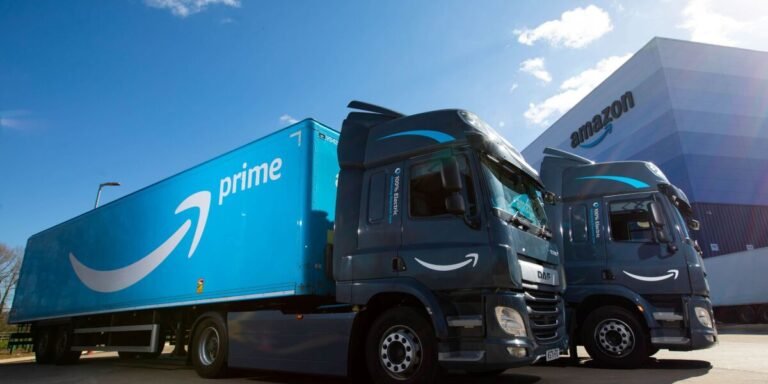At Amazon, we know that our customers, employees, and partners want us to not only contribute, but to be a leader in sustainability and preserving our planet. The key to achieving this is zero-emission vehicles, especially trucks. The current redefinition of emissions rules for trucks in the EU represents a crucial opportunity to set the path towards decarbonisation of logistics.
In support of the Climate Pledge – our commitment to reach net carbon zero by 2040 – we are committed to creating a delivery fleet that helps us achieve these goals. Currently, we have deployed thousands of electric trucks in Europe, and in 2022, we are starting to roll out 40-tonne heavy-duty electric vehicles (HDVs). We also use alternative transportation methods, including e-scooters, e-cargo bikes and more to deliver parcels to customers across Europe.
However, our transport network remains one of the most challenging areas of our decarbonisation work, and achieving net zero carbon will require significant and sustained investment. One of the main reasons for this is that zero-emission heavy vehicles are not widely available and are too expensive for many companies. Currently, a 40-ton zero-emission truck requires two to three times the capital investment of a conventional diesel vehicle, and the infrastructure to support its operation is inadequate. Therefore we must be bold. In late 2022, we announced plans to invest more than €1 billion over the next five years to further electrify and decarbonize our European transport network. We will use this investment to increase our fleet to at least 10,000 electric delivery trucks and more than 1,500 heavy electric vehicles.
However, it is clear that for the logistics sector to fully embrace zero-emission trucks, owners expect that, along with an equal cost of vehicle ownership, the technology must provide similar flexibility and availability to fossil fuel-powered alternatives, so that companies can operate effectively. Operators must be able to seamlessly schedule and plan routes while decarbonising in a cost-effective, yet ambitious and progressive way; They must ensure that zero-emission vehicles will be able to operate across the EU’s single market, and that fast-charging infrastructure will be widely available. Innovation and expansion, thanks to a strong regulatory framework, will be essential to achieve this goal.
The need for early ambition
Long-term goals of complete decarbonisation by 2040 or 2050 are very important destinations, but in order to meet the challenge, interim targets are key.
The current EU target is that, by 2030, truck emissions registered in that year should be 30% lower than those recorded in 2019. We believe this target should be increased to at least 50%, and the longer-term target is 90%. By 2040 is crucial to fostering innovation in road logistics, where zero-emission vehicles form the backbone.
As ambition rises, collaboration between the public and private sectors becomes more important, especially to reduce the risks of adopting new technologies. We are seeing encouraging signs from manufacturers about making zero-emission heavy vehicles widely available, and at Amazon we are keen to work closely with the transport industry, policy makers and civil society to achieve the transition as quickly as possible.






